
Solar Storm, by Marina Núñez. World Expo Osaka 2025, Spain Pavilion.
This is what Marina Núñez's "Solar Storm" looks like at the top of the steps of the spectacular Spanish Pavilion at World Expo Osaka 2025. "Solar Storm" depicts a solar eruption that causes the sun to mutate, metamorphosing into a jellyfish, a flower, a human, and an eagle. Finally, the winged sun moves away, plunging the Earth into darkness. A metaphor for how our relationship with our ecosystems is symbiotic and an allusion to the fact that this is our only territory, and that failing to care for it is a lethal gamble. "Solar Storm" is part of the project "The Sun Itself That Is No Longer a Mirror," curated by Blanca de la Torre and featuring other videos by Pilar Albarracín, Eugenio Ampudia, Ruth Gómez, Elena Lavellés, Esther Pizarro, and Juan Zamora.

Presentation of the AC/E Digital Culture Annual Report 2025
Once again, we are presenting the AC/E Digital Culture Yearbook 2025 at the Espacio Fundación Telefónica. This edition focuses on the creative convergences between art, science, technology, and society.

Opening of the Spain Pavilion at Expo Osaka 2025
In this video, we present highlights from the opening of the Spanish Pavilion at Expo 2025 Osaka. A glimpse of the opening ceremony and a first look at the contents and design of the Spanish Pavilion, conceived under the Expo theme: "Designing the Future Society for Our Lives." Spain's exhibition in Osaka integrates #innovation, #culture, and #sustainability.

Spain, Guest of Honor at FILBO 2025
Discover the intense activity at the Spanish Pavilion at FILBO 2025, where we are the Guest of Honor. This video offers a tour of the meetings with Spanish and international authors, the literary presentations, the enriching debates, and the cultural activities that are marking our outstanding presence at the fair. Immerse yourself in the vibrant literary and cultural atmosphere that Spain is bringing to Bogotá.

Spain Pavilion at Expo 2025 Osaka
Spain's participation in the 2025 Osaka Expo represents a unique opportunity to showcase the innovation, creativity, and sustainability that characterize our country. With the theme "The Kuroshio Current," the Spanish pavilion seeks to connect with visitors through an immersive experience that celebrates the relationship between Spain and the sea.

Map of the Program for the Internationalization of Spanish Culture (PICE) - How it works
The PICE map is an interactive platform that maps the Program for the Internationalization of Spanish Culture since its beginnings in 2013. It allows you to explore the modalities of 'Mobility' and 'Visitors'. It shows the geographic scope of the PICE program through the application of temporal and geographic filters; in addition to having a search engine that allows you to make queries with different criteria. Access the tool: https://mapapice.accionculturalpice.com/

Between chaos and cosmos. Nature in Ancient Greece (Trailer)
The National Archaeological Museum, with the support of Spanish Cultural Action (AC/E), is hosting from October 31 to March 30 an exhibition that explores the deep connection the ancient Greeks established with nature. From lush gardens to cosmic forces, nature was to them much more than a mere environment: it was the stage of their myths, the reflection of their beliefs and the engine of their daily lives.

MusaE 2024 / 2025. Music in the State Museums
Promoted by the General Directorate of Cultural Heritage and Fine Arts of the Ministry of Culture, with the support of Acción Cultural Española (AC/E), the MusaE project is structured as a circuit of acoustic concerts and micro-concerts that circulates through the network of State Museums.

Presentación del Anuario AC/E de cultura digital 2024
presentación del Anuario AC/E de cultura digital el 28 de mayo en el Espacio Fundación Telefónica Madrid con la participación de los autores y el comité asesor: Javier Celaya, Eugenia San Segundo, Mauro Canut, Mariana Toro Nader, Alfredo Marcos, Nuria Rodríguez, Michael McLoughlin, Chema Galante, Maite Ortega, Bibiana Ricciardi y Carlos Tardón
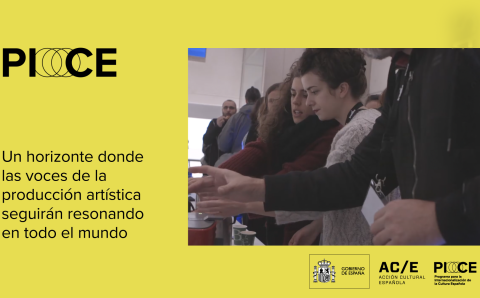
Ten years of the PICE programme through its protagonists
In a world where diversity and shared experiences define our collective identity, a project emerges that celebrates the plurality of values, traditions and connections over a decade. Through the works of thousands of creators, the Programme for the Internationalization of Spanish Culture, known as PICE, has been forging bridges between cultural expressions and the aspirations of our society.

The Cant de la Sibiŀla, from Athens to Mallorca
The Sibiŀla is a wise woman believed to embody a prophetic spirit. Her voice foretells the fate of the year accompanied by a choir and ancient instruments. Even though it is a pagan ritual, this song is typically performed on the night of December 24, before the Midnight Mass, in churches and cathedrals in Catalonia, the Balearic Islands, Valencia, Sardinia (Alghero) and French Roussillon.
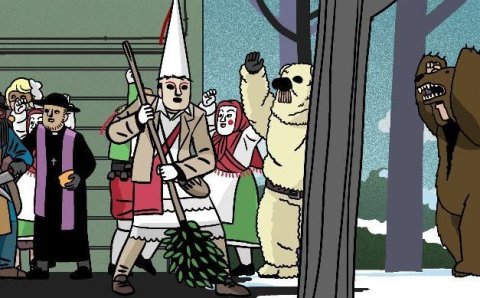
Aguilandeiros, from Grau to Suceava
The Aguilandeiros de San Xuan is a winter masquerade like many others on the peninsula and in much of Europe. This winter solstice tradition brings masked characters that walk the streets of villages asking for a Christmas present.
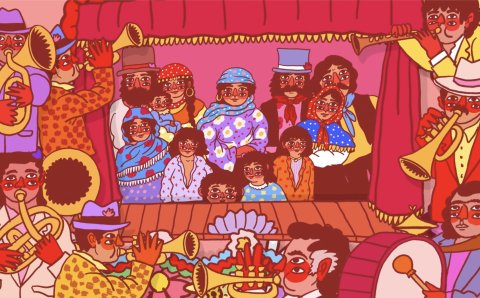
Europa tiene alma gitana, de Algeciras a Estambul
Desde su llegada a Europa en el siglo XIII, procedentes del noroeste de la India, y con una población actual en el continente de unos 8 millones de personas, los gitanos son la minoría más numerosa en la actual Unión Europea.

Trashumance, from Scandinavia to Extremadura
In today’s Europe, there are only two regions in which long-distance seasonal movement of livestock continues: in the region of Scandinavia with the transhumance of reindeer and in the Iberian Peninsula with sheep.

Avetimología Trailer
'Avetimología-Birdtymology' is the animated short film commissioned by Acción Cultural Española (AC/E) to Sygnatia within the framework of the Cultural Program of the Spanish Presidency of the Council of the European Union, which tells the history of Europe and Spain through different species of birds that accompany us on a journey through history, art and nature.
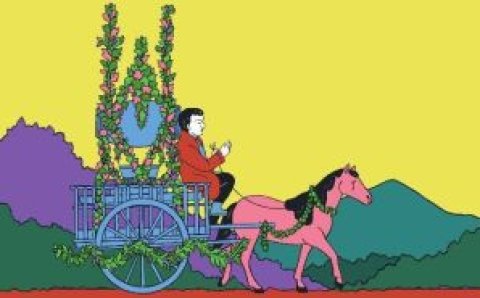
Modernism, from Vallfogona to Brussels
The Vallfogona Parade” was an unrealized 1879 project by the modernist architect Antoni Gaudí. Gaudí wished to commemorate the 250th anniversary of the death of the Rector of Vallfogona, a priest and poet of the small Catalan village of Vallfogona, with a parade with floats

EU against dictatorships
One of the most important missions of European Union is to ensure democracy and the rule of law, as well as to promote respect for human rights and fundamental freedoms. To confront the hatred imposed by dictatorships of some parts of Europe and the rest of the world, education is the key. This short piece of animation aims to remind us of this history to avoid repeating the mistakes of the past. .

Hurdy-Gurdy, from Alsace to Finisterre
This oneiric piece tells the story of how the hurdy-gurdy originated. This string instrument left its monastic and church settings to become a popular instrument amongst minstrels and troubadours. It was later played by pilgrims of the Camino de Santiago, and then became known throughout Europe.

Making of 'Avetimología - Birdtymology'
The short film, commissioned by Acción Cultural Española (AC/E) from Sygnatia within the framework of the Cultural Program of the Spanish Presidency of the Council of the European Union, and directed by Xosé Zapata, includes tributes to our cultural heritage, from the painting of Velázquez , Dürer or Picasso, to our most recent history.

Vostell Museum, from Leverkusen to Malpartida
Wolf Vostell, a Spanish German artist of worldwide prestige, arrived from Leverkusen to Malpartida de Cáceres in 1976 and founded the Museo Vostell, turning this Lavadero de Lanas into a critical space for the European artistic avant-garde.

Bertsolaris, from the Alpujarra to Corsica
This audiovisual piece, illustrated by Andalusian cartoonist Grillante and animated by Alfonso Benítez, portrays the living tradition of improvisation, taking us a on a journey through the south of Europe whilst showing a 28-verse poem composed and told by seven different voices, each poet adding to the other’s preceding verses, very much like an exquisite cadaver.

Accordion, from Vienna to Burgos
The accordion, invented in Vienna at the beginning of the 19th century, quickly became the ideal instrument for popular music. It arrived in Spain through the Italian workers who worked on the construction of the northern railways. From that moment on it was the instrument par excellence in parties and festivals, and with it came the dance in pairs, the "agarrao" dance.
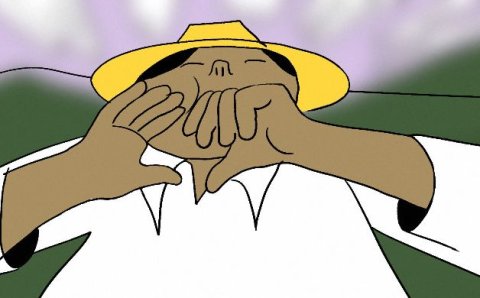
The Gomera Whistle. From La Gomera to Tyrol
The Silbo Gomero is a language, a basic tool for shepherds who were far from each other and in turn from the towns.
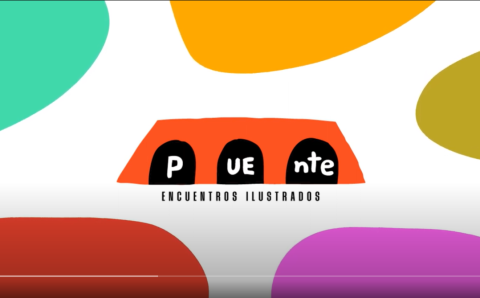
We tell you about the project "pUEnte, Illustrated Encounters"
"pUEnte, Illustrated Encounters" is a set of 11 short animation pieces whose protagonists are musical instruments, traditions, arts, artists, stories and places that will make visible little-known and unique aspects that unite us citizens of the European Union…
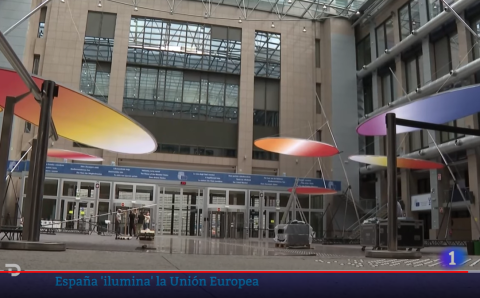
EU: The Spanish Presidency begins in Brussels with the work 'Solar Landscape' | RTVE News
Spain has given the go-ahead to the presidency of the Council of the European Union with the inauguration of the artistic project 'Solar Landscape' by the artist Rocío Asensi, which has two installations in the Council building that hosts the meetings of the Twenty-seven and the European leaders summit.
Light, sun, ecological transition, energy, European values, all this is what this work wants to represent. Artistic creation is the soul of European culture and European culture is the basis of the entire construction of Europe", said the Minister for Foreign Affairs, Cooperation and the European Union, Jose Manuel Albares from Brussels.
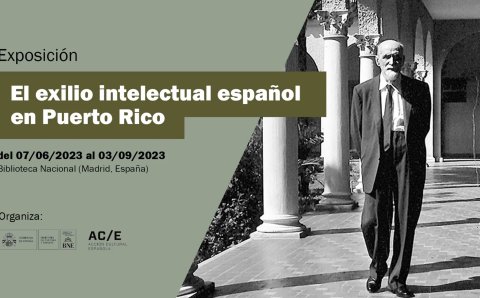
'The Spanish intellectual exile in Puerto Rico'. The exhibition
In this video, the curator of the exhibition, Ernesto Estrella Cózar, presents this exhibition that reconstructs the broad context of Spanish intellectual exile in Puerto Rico, paying attention to the daily cultural life of these exiles (their projects, their publications, their collaborations and friendships ). Among the Spanish intellectuals and artists who made Puerto Rico their home and who participated intensely in the sociocultural life of the island are: Juan Ramón Jiménez and Zenobia Camprubí, Pau Casals, Pedro Salinas, María Zambrano, Jorge Guillén, Francisco Ayala, Federico de Onís or Aurora de Albornoz.

About the exhibition 'The Spanish intellectual exile in Puerto Rico'
In this video, the curator of the exhibition, Ernesto Estrella Cózar, presents this exhibition that reconstructs the broad context of Spanish intellectual exile in Puerto Rico, paying attention to the daily cultural life of these exiles (their projects, their publications, their collaborations and friendships ). Among the Spanish intellectuals and artists who made Puerto Rico their home and who participated intensely in the sociocultural life of the island are: Juan Ramón Jiménez and Zenobia Camprubí, Pau Casals, Pedro Salinas, María Zambrano, Jorge Guillén, Francisco Ayala, Federico de Onís or Aurora de Albornoz.

Presentation of the AC/E Digital Culture Annual Report 2023
On the occasion of the publication of the 2023 Yearbook, AC/E convened several panels of experts at the Espacio Fundación Telefónica with the authors and advisors of this year's edition to discuss the main topics of the Focus and the articles…

MusaE 2023.Music in the State Museums
Promoted by the General Directorate of Cultural Heritage and Fine Arts of the Ministry of Culture and Sports with the support of Acción Cultural Española (AC/E), the MusaE project is articulated as a circuit of acoustic concerts and micro-concerts that circulates through the network of State Museums. The testimony of its success can be found in the words of the protagonists of the 2022 edition.
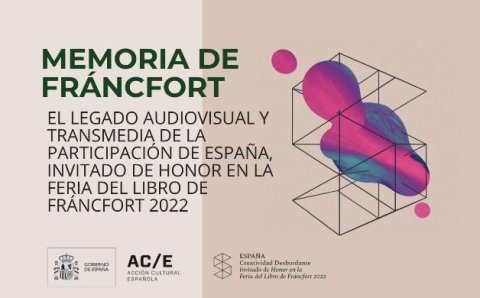
Presentation of the project 'Memory of Frankfurt | Spain Guest of Honor at the Frankfurt Book Fair 2022'
On March 15, 2022, the transmedia memory of the Spain Guest of Honor project at the Frankfurt Book Fair was presented at the Goethe-Institut Madrid with the participation of María Jesús Montero Cuadrado, Minister of Finance and Public Function, María José Gálvez Salvador, General Director of the Book and Promotion of Reading, Ministry of Culture and Sports, Marián del Egido Rodríguez, director of the "Carlos Saura Center for the Conservation and Restoration of Film Collections" of the Spanish Film Library, Rosa Montero, writer and journalist, Roger Casas-Alatriste , CEO and founder of El Cañonazo Transmedia, and José Andrés Torres Mora, president of Acción Cultural Española.

